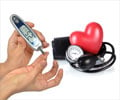A unique physician “pay-for-performance” program at Montefiore Medical Center has reduced blood sugar and cholesterol levels significantly among many of the patients in South Bronx.
A unique physician “pay-for-performance” program at Montefiore Medical Center has reduced blood sugar and cholesterol levels significantly among many of the patients in South Bronx.
Physicians in each of Montefiore Medical Group’s (MMG) 21 community-based centers are given targets to reach for blood sugar and cholesterol levels in their diabetes patients and can be rewarded up to $3,200 annually for attaining these targets, an incentive paid for by the MMG administration.“To improve blood sugar and cholesterol in diabetes patients requires a lot of invisible work, follow-up phone calls, counseling, developing rapport with patients and staying on their case over time,” said Sophia Au, MD, an internal medicine specialist in the Montefiore Medical Group for 13 years. She says it takes about two months to bring sugar levels down considerably for most diabetes patients through diet, exercise, medications, and home self-monitoring with a glucometer.
“Physicians are not paid for follow-up care; but, if we don’t follow-up, we will not succeed and more importantly neither will our patients. The incentive pay, while not much, is recognition of the invisible care and doing the right thing,” said Au. “There is another incentive. Because each physician has formalized scores for her patients, and we share these scores, I want to be in the top tier among my peers. I am competitive and being in the top tier is a professional reward.”
“Outcome-based medicine, with comparison scores and monetary incentives, works in this setting where we care for 14,000 diabetes patients,” said Arthur Hopkins, MD, medical director of Montefiore Medical Group 1. “We have been able to keep one standard measure of blood sugar, called HbA1C, below a recognized level of 9 in 85% of our patients, who have some of the most severe diabetes in the nation. Other programs caring for the same population of diabetes patients in the Bronx – e.g. HIP and Oxford have kept HbA1C levels below 9 for only 67-75% of their patients.” (Data from a state report titled “2006 New York State Managed Care Plan Performance”). Dr. Hopkins noted that 54% of patients under care at MMG had HbA1C levels under 7.
Similar ranges apply in effectively lowering LDL (bad) cholesterol: 56% of diabetes patients at Montefiore kept LDL below 100, whereas the range in other programs was 36-42%, said Hopkins.
Lee Berk, MD, an internal medicine specialist at MMG for the past four years, like all physicians in the group is paid an annual salary. He consistently gets additional income for bringing down blood sugar and cholesterol levels in his diabetes patients. “My clinical curiosity kicks in when a first time patient comes in who is overweight by 60 pounds and no one ever did anything about it. I know that to succeed, however, I have to stay on this patient – make sure lab results are done before visits, change medications when needed, use insulin early on. This takes extra hours of phone calls and follow-up monitoring. I know that you cannot let the patient control the agenda if you want success. Being committed to success for each individual patient means riding them a bit, and the extra pay I receive is professional recognition for doing that.”
Advertisement
While the Montefiore pay-for-performance program is self financed and operates independently, next year it will become part of a larger project at Montefiore in pay-for-performance. This project, funded by a $2.4 million grant from the New York State Department of Public Health, will look at controlling heart disease risk factors.
Advertisement
For patients who are uneducated, she translates information about A1C levels into grades, of A, B, C, D, and underscores that if they do not change their grades they will be at risk for heart attacks and other problems. She gets them to change diets, puts them on medications and exercise plans. Then she monitors their home glucometer readings. First she gets them to lower their “fasting sugar levels,” a measurement taken when they get up in the morning. She may adjust medications and diet to do so. Then she works with patients to get their “before lunch” levels down, then “before diner” levels down and lastly get their glucose under control before they go to bed.
She repeats the process for cholesterol levels, which she says is more difficult to do these days because there are fewer statin drugs available on the market and there has been bad press about some drugs, such as Zetia. It takes about 2 months of this tightly controlled monitoring to bring glucose levels down, she says.
Source-Newswise
RAS/C















